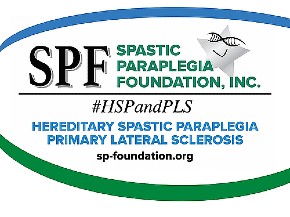Young scientists collaborating with CRISPR impresario Jennifer Doudna of the University of California, Berkeley, generally don’t envision mucking about with groundwater teeming with all manner of microscopic beasts. But there they were, analyzing water samples from the abandoned Iron Mountain gold and silver mine in northern California, from an old uranium mine in Colorado, and from a frigid gey- ser in Utah, in each case running a “metagenomic analysis,” sequencing the genome of every one of the aquatic residents.
It’s like panning for biological gold, and the result was an 18-karat treasure, Doudna and her colleagues announced on Monday: a CRISPR protein different from any previously known, able to edit human genomes like a charm, and with properties that could make it a workhorse of therapeutic editing.
“Many labs are busily looking through [genomic] databases for CRISPR proteins, but it’s rare to find one that’s useful for genome editing,” said Doudna. The new en- zyme, described in a paper in Nature and called CasX for now (it will likely be called Cas12e, but the Cas nomenclature is a hot mess), not only edits human genes in cells growing in lab dishes, she and her colleagues found. It also has properties that could allow it to enter human cells more readily than the commonly used CRISPR-Cas9 and replace disease-causing segments of DNA with healthy chunks.
“Having an expanded toolbox is of great use” to would-be genome editors, said pro- tein engineer Ben Kleinstiver of the Center for Genomic Medicine at Massachusetts General Hospital, who was not involved in the CasX work.
IN THE LAB
Each new CRISPR enzyme “enables researchers to do different things because they have unique functionalities.”
It’s 1849 for CRISPR enzymes, and fortunes are up for grabs.
Startup Arbor Biotechnologies has raised more than $15 million on the prom-
ise of discovering new CRISPR enzymes and other valuable biomolecules. Last month Arbor and Vertex Pharmaceuticals (VRTX) announced that they had begun a collaboration (financial terms undisclosed) focused on discovering novel CRISPR enzymes, aimed at genome-editing therapies for cystic fibrosis and four other diseases to be chosen later. Doudna and four of her co-authors have filed for a CasX patent, as have the discoverers of every other new Cas enzyme.
In addition to making CRISPR-based therapies more efficient and versatile, the enzyme gold rush could provide workarounds to the CRISPR patent dispute, which involves only Cas9: Each new enzyme offers a way to do genome editing without worrying about who owns the rights to CRISPR-Cas9.
Since about 2012, scientists using the CRISPR genome-editing system had been contentedly pairing the Cas9 enzyme with a guide RNA (the RNA acts like a bloodhound, finding a specific target in a cell’s genome, while the enzyme cuts the DNA, either snipping out a disease-causing region or replacing it with healthy DNA as well). But in 2015 scientists at the National Institutes of Health and the Broad Institute discovered another bacterial enzyme that works with CRISPR. They named it Cpf1 (it’s now Cas12a) and reported that it cut DNA in a way that could make it an even better genome editor than Cas9.
Since then, scientists have discovered a plethora of CRISPR enzymes in bacteria that make yogurt (Streptococcus thermophilus), colonize human noses (Neisseria lactamica), kill people (Legionella pneumophila), live in soils (Alicyclobacillus acidoterrestris), or inhabit the seas (Oleiphilus species), among other sources. Last month, Arbor announced the discovery of four more: Cas12c, Cas12g (which edits RNA, not DNA), Cas12h, and Cas12i.
For a CRISPR system to become a therapy, it has to edit genomes, get into target cells, edit only what it’s supposed to, and do it efficiently. “All of the CRISPR sys- tems harnessed for genome editing to date show differences across these four prop- erties,” said Arbor co-founder David Scott. “Having a diversity of enzymes increases the chances of having the right tool for different applications.”
The CRISPR enzyme gold rush doesn’t end with mere discovery, however. Like the Forty-Niners who turned their raw nuggets into gems, these prospectors go beyond what nature coughs up. Last month, for instance, the Broad’s Feng Zhang and his team reported that they had induced mutations in Cas12b, which in its natural form doesn’t work well in human cells. With the mutations, it does, even making it supe- rior to the original Cas9 on some measures.
CasX, which was discovered in groundwater from the Colorado site in the metag- enomics research led by Berkeley’s Jill Banfield, shows similar promise. For starters, it’s small, at 980 amino acids (Arbor’s 12h is the smallest known, at 870 to 933 amino acids, while the original Cas9 has 1,368). That’s important for future thera- pies because CRISPR is usually ferried into target cells with a virus, “and there’s only so much you can fit in,” said MGH’s Kleinstiver. If the enzyme takes up less space, there’s more room for the rest of CRISPR, including more repair DNA. “In gener- al,” said Arbor’s Scott, “smaller enzymes enable more delivery options to enhance genome editing,” such as nanoparticles rather than viruses.
The small size of CasX gives it what Doudna calls “interesting properties for things like delivery into cells.”
Its guide RNA is so large relative to the enzyme that it changes the surface of the CRISPR package in a way that makes it more electrically charged. That, Doudna said, which could ease its passage into cells — one of the trickiest challenges to CRISPR therapies now in development.
When the Berkeley scientists tested how well CasX edited human cells in lab dish- es, they got editing efficiencies of about 34 percent, comparable to how well both CRISPR-Cas9 and CRISPR-Cas12a did when they were first discovered. But by tweaking how they ferried it into cells, they raised that to as high as 55 percent.
CasX has another property that seems arcane but may prove invaluable for CRIS- PR therapies. It cuts DNA in a way that leaves what’s called a staggered dou- ble-stranded break: One of the double helix’s complementary strands overhangs the other by about 10 nucleotides. (Cas12a and 12b also make staggered cuts.)
“That could be useful for triggering certain kinds of DNA repair,” Doudna said. In particular, it might promote what’s called homology-directed repair, meaning the genome accepts repair DNA rather than reacting to CRISPR by patching the cut willy-nilly. Repair DNA will likely be needed for at least some therapeutic uses. “The next breakthrough in genome editing is going to be figuring out how to favor homology-directed repair,” Doudna said.



